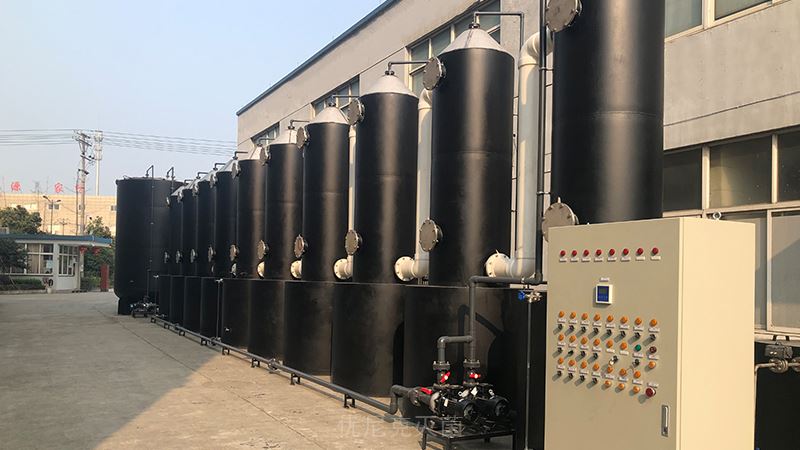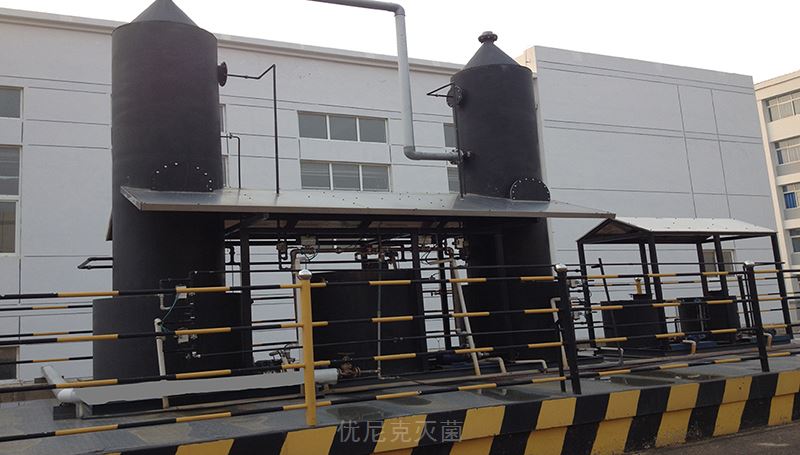Principle of waste gas treatment equipment:
Water method:Ethylene oxide can hydrate with water:C2H4O + H2O — CH2OH-CH2OH。
Under normal temperature and pressure, the reaction rate is very slow. In order to improve the reaction speed, there are feasible methods.
Acid catalyst:When the PH value is 1Mel 3, the reaction speed is accelerated rapidly.
Considering the comprehensive cost and safety, the equipment uses the treatment method of acid catalysis at room temperature and pressure. The addition of sulfuric acid to form an acidic environment promotes the hydration of ethylene oxide. After the completion of the treatment, add NaOH to carry out neutralization and post-discharge.
Reach the standard after treatment:
1.The ethylene oxide gas in the wastewater was treated by 99.5%.
2. The residual amount of ethylene oxide spilled from the waste gas treatment unit is within the 2PPM.
3.The chemical oxygen demand (COD) of ethylene glycol waste liquid after treatment is less than 500.
technological process:
technological process
Catalytic reaction: our waste gas treatment equipment uses hydrolysis method: because ethylene oxide has a good affinity with water, and water will produce ethylene glycol (the main component of automobile antifreeze). Ethylene oxide is flammable, explosive and toxic, while ethylene glycol is toxic, not flammable and explosive. Choose the lesser of the two evils. Because ethylene oxide is easier to form ethylene glycol with water under acidic conditions, we add sulfuric acid to the hydrolysis of ethylene oxide waste gas to catalyze the formation of ethylene glycol, and then add alkali to neutralize it. The PH value is close to 7. In the hydrolysis method, the waste gas from the sterilizer goes into a stainless steel storage tank after primary treatment, and when it reaches the set liquid level, The corrosion resistant circulation pumps the sewage to the waste gas treatment unit (three towers), where it is sprayed & mdash; in the three towers. Circulation-mdash; continues to catalyze-mdash; neutralization-mdash; dilution, resulting in neutral, low concentration ethylene glycol liquid into the industrial wastewater pipe in the plant.


